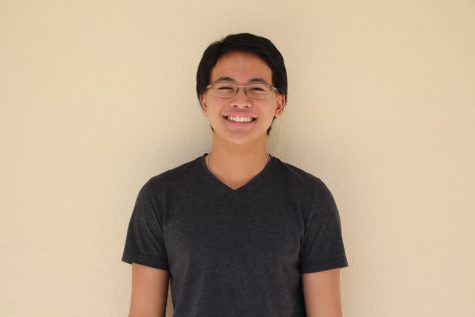
Legend says that if you reach deep enough into the inside pocket of Danny’s leather jacket, past the hordes of pens and six-sided dice moping dejectedly,...
March 25, 2017
As high schoolers, we’re usually the only people in the room below the age of 30 at local City Council meetings. While we often go to find new topics for articles, much of our interest is rooted in the policies and proposals that affect us and our fellow residents. In an effort to understand the evolution of local policy, we reached out to current council members, who redirected us to the past: Roy and Penny Lave.
Both former council members and mayors, the two have observed changes in policy rooted in generational and cultural changes through the years. With the Lave’s, we traveled back to Los Altos in the 1960’s: a town that would seem unrecognizable to many of us.
“It was mostly all white, and a lot of the people who settled here after [World War II] were former military,” Penny said. “They came out and stayed in California, then went to work for the defense contractors. They were very conservative people.”
This political and cultural mix, or lack thereof, resulted in an opposition to many development projects and use of funding. The controversy over whether City Council should buy the Hillview Community Center with federal money is one notable example of the old state of Los Altos.
“There was a sizable number of people who did not want to take federal money because they were worried about so-called strings that would force us to do things they didn’t want us to do,” Roy said. “So when we bought Hillview School, there was a lot of outcry from a certain set of people that said, ‘If you buy that with federal funds, you’ll have to build low-cost housing there.’ It wasn’t true. It was just a fear. [But], for some number of years, we refused to claim the money from our development grant.”
However, with newer perspectives today, controversies like this are not as prevalent.
“Now, we take that money and nobody complains,” Roy said. “There are no strings, and it’s useful money since you can use it for a lot of different things. It’s less conservative now, and more comfortable now since it’s less conservative.”
As the years went by, Los Altos became more diverse not only in thought but in culture and age due to an influx of new families. The Lave’s have had a front-seat view of it all.
“There are many more cultures here now than there used to be,” Penny Lave said. “It’s changed so much, which is great. I love walking down Main Street, since I can’t walk down Main Street without hearing a different language.”
With Silicon Valley’s tech boom, a younger generation flocked to Los Altos with their own beliefs and values. Families attracted to good jobs and schools settled as residents, and the city’s demographics diversified.
“We had all this tech economy, and they were hiring the youngest and brightest,” Penny said. “Those people [had] families, and they wanted to live in a good school district, [which] Los Altos had.”
In response to these changes, residents have initiated a number of policies to engage the younger generation in local government. Penny started the Leadership Education Advancement Program (LEAD) to help new citizens get involved.
“I started the [LEAD] program about 20 years ago to introduce people to Los Altos and the volunteer opportunities and the different segments of the government,” Penny said. “It’s interesting — at first we got people who are new to town, now we have a lot of people who have… retired and taken this course to get an idea of what might they do to be part of the volunteer force. Some of them have even run for the City Council.”
With the cultural changes that have transformed Los Altos come the opportunity for us to engage with the community. From increased diversity to more liberal policies to generational change, Los Altos has seen a lot. At the end of the day, even though we are the only high schoolers in the room, Los Altos is a community that’s evolved over time, and the younger generation is a part of the community that will shape its future.

Legend says that if you reach deep enough into the inside pocket of Danny’s leather jacket, past the hordes of pens and six-sided dice moping dejectedly,...